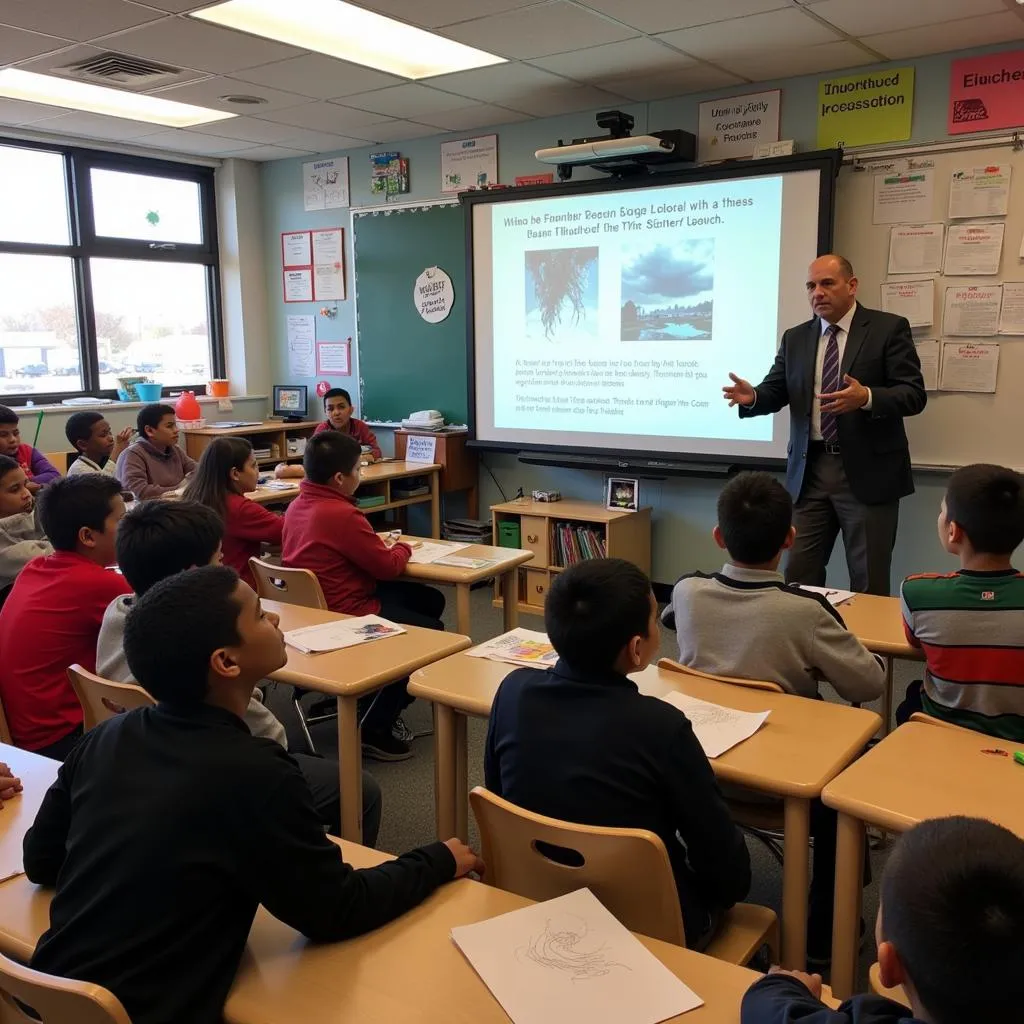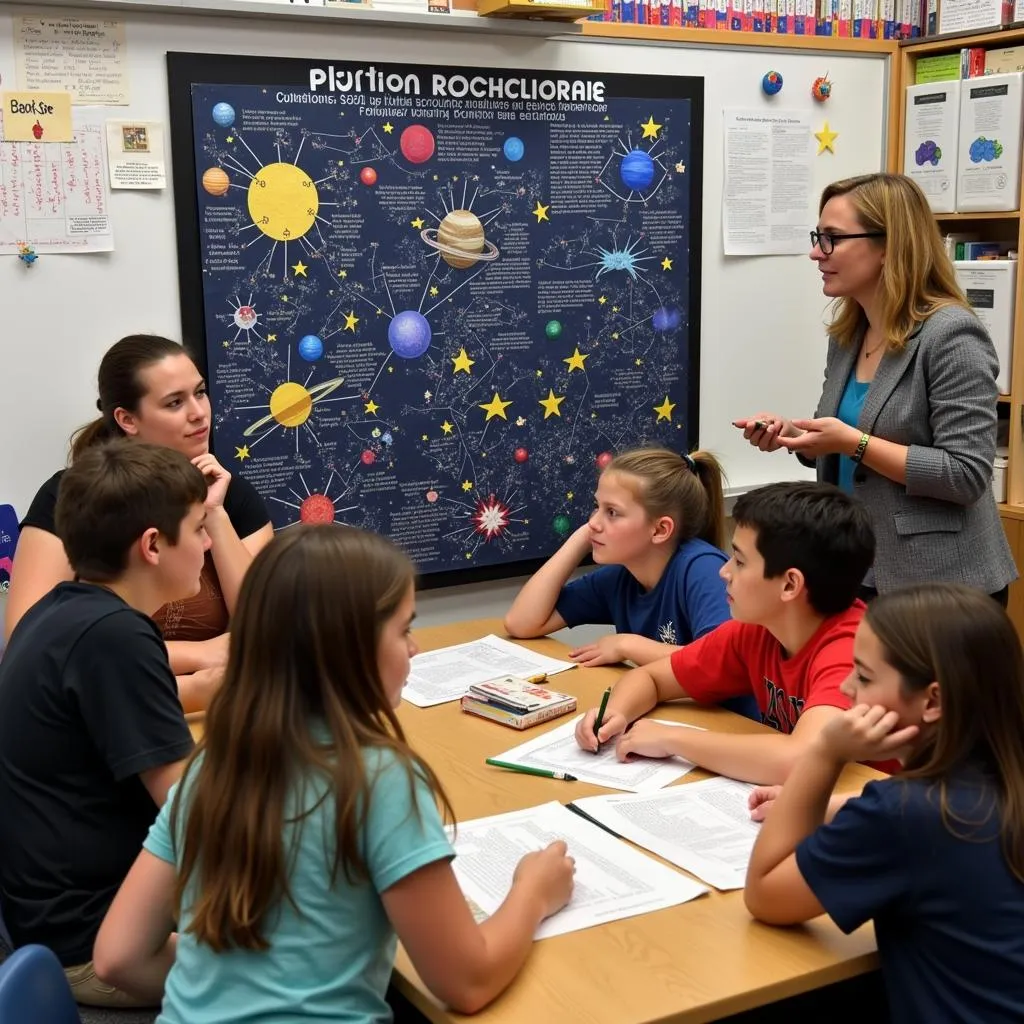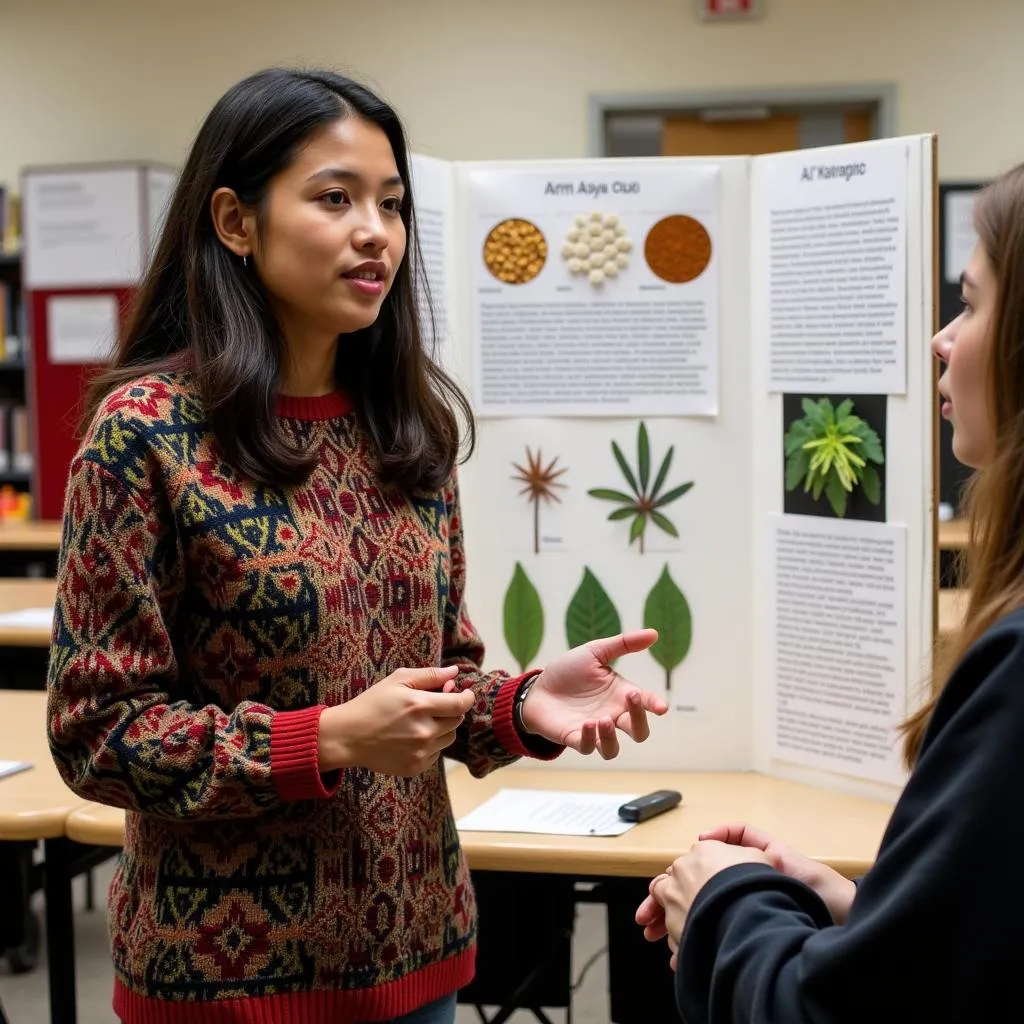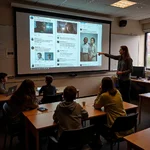The IELTS Reading test often includes passages on various academic topics, including the intersection of culture and education. One fascinating subject that frequently appears is the use of folklore in science education. This article provides a comprehensive IELTS Reading practice test on this topic, complete with passages, questions, and answers.
Passage 1 – Easy Text
The Role of Folklore in Science Education
Folklore has long been an integral part of human culture, passing down knowledge, beliefs, and traditions from generation to generation. In recent years, educators have begun to recognize the potential of incorporating folklore into science education. This approach not only makes science more engaging and relatable but also helps preserve cultural heritage.
One of the primary benefits of using folklore in science education is its ability to bridge the gap between abstract scientific concepts and everyday experiences. Many folktales and myths contain explanations for natural phenomena, which can serve as a starting point for introducing scientific principles. For example, the Native American legend of the “Thunder Bird” can be used to discuss meteorology and the formation of thunderstorms.
Moreover, folklore can help students develop critical thinking skills. By analyzing traditional stories and comparing them with scientific explanations, students learn to evaluate different sources of information and understand the evolution of human knowledge. This process also encourages students to appreciate both scientific and cultural perspectives, fostering a more holistic understanding of the world around them.
 Students learning about science through folklore
Students learning about science through folklore
The role of folklore in modern education extends beyond science classes. It can be a valuable tool in promoting cultural awareness and fostering respect for diverse traditions. By incorporating folklore from various cultures into science lessons, educators can create a more inclusive learning environment that celebrates diversity while teaching essential scientific concepts.
Questions 1-5
Do the following statements agree with the information given in the Reading Passage?
Write
TRUE if the statement agrees with the information
FALSE if the statement contradicts the information
NOT GIVEN if there is no information on this
- Folklore has only recently been considered valuable in education.
- Using folklore in science education can help preserve cultural heritage.
- The “Thunder Bird” legend is used in all Native American schools to teach meteorology.
- Analyzing folklore can improve students’ critical thinking skills.
- Incorporating folklore in science education is mandatory in all schools.
Questions 6-10
Complete the sentences below.
Choose NO MORE THAN TWO WORDS from the passage for each answer.
- Folklore helps to connect __ __ concepts with everyday experiences.
- Many folktales contain explanations for __ __.
- By comparing folklore with scientific explanations, students learn to evaluate different __ __ __.
- Using folklore in science education can create a more __ learning environment.
- Incorporating folklore from various cultures can promote __ __ in the classroom.
Passage 2 – Medium Text
Integrating Folklore into the Science Curriculum
The integration of folklore into science education represents a paradigm shift in pedagogical approaches. This innovative method not only enhances student engagement but also promotes a deeper understanding of scientific concepts through cultural contextualization. As educators strive to make science more accessible and relevant to diverse student populations, the use of folklore has emerged as a powerful tool in achieving these objectives.
One of the most significant advantages of incorporating folklore into science education is its ability to tap into students’ prior knowledge and cultural experiences. Many students, particularly those from indigenous or minority backgrounds, may feel disconnected from traditional Western scientific narratives. By introducing scientific concepts through familiar stories and cultural references, educators can create a more inclusive learning environment that validates students’ cultural heritage while simultaneously advancing their scientific understanding.
Moreover, the use of folklore in science education can foster the development of critical thinking and analytical skills. Students are encouraged to examine traditional explanations for natural phenomena and compare them with modern scientific theories. This process not only helps students understand the evolution of scientific thought but also develops their ability to evaluate different sources of information critically. By engaging in this comparative analysis, students learn to appreciate both the value of traditional knowledge and the rigor of scientific inquiry.
The impact of cultural narratives on language acquisition is well-documented, and this principle can be applied to science education as well. Folklore often contains rich, descriptive language that can enhance students’ scientific vocabulary and communication skills. For instance, metaphors and analogies found in traditional stories can be used to explain complex scientific concepts in more relatable terms.
 Students using folklore to understand scientific vocabulary
Students using folklore to understand scientific vocabulary
Furthermore, the integration of folklore into science education can promote interdisciplinary learning. By drawing connections between science, literature, history, and cultural studies, educators can create a more holistic educational experience. This approach not only enriches students’ understanding of science but also helps them appreciate the interconnectedness of different fields of knowledge.
However, it is crucial to implement this approach thoughtfully and sensitively. Educators must be careful not to perpetuate stereotypes or misrepresent cultural beliefs. The goal should be to use folklore as a bridge to scientific understanding, not to replace scientific explanations with traditional beliefs. Proper training and resources for teachers are essential to ensure that folklore is used effectively and respectfully in the science classroom.
Questions 11-14
Choose the correct letter, A, B, C, or D.
-
According to the passage, integrating folklore into science education:
A) Is a completely new approach to teaching
B) Represents a significant change in teaching methods
C) Has been proven to be ineffective
D) Is only suitable for younger students -
The use of folklore in science education is particularly beneficial for:
A) Students from Western backgrounds
B) Teachers with extensive scientific knowledge
C) Students from indigenous or minority backgrounds
D) School administrators -
Comparing traditional explanations with modern scientific theories helps students:
A) Reject traditional knowledge entirely
B) Develop critical thinking skills
C) Memorize scientific facts more easily
D) Avoid learning about cultural beliefs -
The passage suggests that the language used in folklore can:
A) Replace scientific terminology
B) Confuse students about scientific concepts
C) Enhance students’ scientific vocabulary
D) Only be understood by native speakers
Questions 15-19
Complete the summary below.
Choose NO MORE THAN TWO WORDS from the passage for each answer.
The integration of folklore into science education offers numerous benefits. It helps create an (15) __ __ environment that validates students’ cultural heritage. This approach also develops students’ (16) __ __ skills by encouraging them to compare traditional and modern explanations. The rich language of folklore can enhance students’ (17) __ __ and communication abilities. Additionally, this method promotes (18) __ __ by connecting science with other subjects. However, educators must be careful to avoid (19) __ __ or misrepresenting cultural beliefs when implementing this approach.
Passage 3 – Hard Text
The Empirical Evidence: Folklore’s Impact on Science Education
The incorporation of folklore into science education has garnered significant attention from researchers and educators alike. While the theoretical benefits of this approach have been widely discussed, it is crucial to examine the empirical evidence supporting its effectiveness. Recent studies have provided valuable insights into the tangible impacts of integrating folklore into science curricula, offering a more nuanced understanding of its potential and limitations.
A longitudinal study conducted by Hernandez et al. (2019) across diverse educational settings revealed a statistically significant improvement in science comprehension and retention among students exposed to folklore-integrated science lessons. The study, which spanned three years and involved over 5,000 students from various cultural backgrounds, demonstrated that students in the experimental group consistently outperformed their peers in standardized science assessments. Moreover, the researchers observed a notable increase in student engagement and participation, particularly among traditionally underrepresented groups in STEM fields.
However, the efficacy of folklore integration appears to be contingent upon several factors. A meta-analysis by Zhang and Thompson (2020) identified key variables that influence the success of this approach. The researchers found that the cultural relevance of the folklore used, the expertise of the educator in bridging traditional narratives with scientific concepts, and the frequency and depth of integration were critical determinants of educational outcomes. Interestingly, the study also revealed that the positive effects were most pronounced in elementary and middle school settings, with diminishing returns observed in high school and undergraduate contexts.
 Students connecting with science through cultural identity
Students connecting with science through cultural identity
The role of community radio in promoting cultural education has been well-documented, and similar principles apply to the use of folklore in science education. Both approaches leverage cultural narratives to enhance learning experiences.
One of the most compelling findings in recent research is the impact of folklore integration on students’ scientific identity formation. A qualitative study by Nguyen et al. (2021) explored how exposure to culturally relevant folklore in science education influenced students’ perceptions of themselves as potential scientists. The researchers found that students from minority backgrounds were more likely to envision themselves pursuing scientific careers when their cultural knowledge was validated and integrated into the scientific discourse. This finding has significant implications for addressing the persistent lack of diversity in STEM fields.
Despite these promising results, some critics argue that the integration of folklore may compromise scientific rigor. A study by Patel and Ramirez (2022) addressed this concern by comparing the scientific accuracy of students’ explanations in folklore-integrated and traditional science classes. Surprisingly, they found no significant difference in the accuracy of scientific explanations between the two groups. However, students in the folklore-integrated classes demonstrated a greater ability to articulate complex scientific concepts using culturally relevant analogies and metaphors.
It is important to note that the successful integration of folklore into science education requires careful curriculum design and teacher training. A comprehensive review by Li et al. (2023) highlighted the need for structured frameworks and professional development programs to equip educators with the skills necessary to effectively implement this approach. The researchers emphasized the importance of collaboration between science educators, cultural anthropologists, and community elders to ensure that folklore is used authentically and respectfully in the science classroom.
The influence of traditional clothing in cultural education demonstrates how tangible cultural elements can enhance learning experiences. Similarly, the tactile and visual aspects of folklore can be leveraged to create more engaging science lessons.
As the body of research on folklore integration in science education continues to grow, it is becoming increasingly clear that this approach holds significant potential for enhancing scientific literacy, promoting cultural inclusivity, and fostering a new generation of diverse scientists. However, ongoing research is needed to refine best practices and address the challenges associated with implementing this innovative pedagogical strategy on a broader scale.
Questions 20-23
Choose the correct letter, A, B, C, or D.
-
According to the Hernandez et al. study, students exposed to folklore-integrated science lessons:
A) Showed no improvement in science comprehension
B) Performed worse than their peers in assessments
C) Consistently outperformed their peers in science assessments
D) Only showed improvement in cultural studies -
The meta-analysis by Zhang and Thompson (2020) found that the positive effects of folklore integration were:
A) Equally strong across all educational levels
B) Most pronounced in elementary and middle school settings
C) Only significant in undergraduate contexts
D) Strongest in high school settings -
The study by Nguyen et al. (2021) revealed that folklore integration in science education:
A) Had no effect on students’ career aspirations
B) Discouraged students from pursuing scientific careers
C) Positively influenced minority students’ scientific identity formation
D) Only affected students from Western backgrounds -
The research by Patel and Ramirez (2022) found that students in folklore-integrated classes:
A) Provided less accurate scientific explanations
B) Could not articulate complex scientific concepts
C) Showed no difference in scientific accuracy compared to traditional classes
D) Performed worse in scientific assessments
Questions 24-26
Complete the sentences below.
Choose NO MORE THAN THREE WORDS from the passage for each answer.
- The success of folklore integration in science education depends on factors such as cultural relevance, teacher expertise, and __ __ __ of integration.
- Critics argue that integrating folklore into science education may __ __ __.
- Successful integration of folklore into science education requires careful curriculum design and __ __.
Questions 27-30
Do the following statements agree with the claims of the writer in the Reading Passage?
Write
YES if the statement agrees with the claims of the writer
NO if the statement contradicts the claims of the writer
NOT GIVEN if it is impossible to say what the writer thinks about this
- The integration of folklore into science education has been proven to be universally effective across all age groups and cultural contexts.
- Collaboration between science educators, cultural anthropologists, and community elders is important for authentic folklore integration.
- The use of folklore in science education completely eliminates the achievement gap between students from different cultural backgrounds.
- Ongoing research is necessary to refine the practices of integrating folklore into science education.
Answer Key
- FALSE
- TRUE
- NOT GIVEN
- TRUE
- NOT GIVEN
- abstract scientific
- natural phenomena
- sources of information
- inclusive
- cultural awareness
- B
- C
- B
- C
- inclusive learning
- critical thinking
- scientific vocabulary
- interdisciplinary learning
- perpetuate stereotypes
- C
- B
- C
- C
- frequency and depth
- compromise scientific rigor
- teacher training
- NO
- YES
- NOT GIVEN
- YES
The role of public art projects in community education shares similarities with the use of folklore in science education, as both approaches aim to make learning more accessible and culturally relevant. By incorporating various cultural elements into education, we can create more inclusive and effective learning environments across different subjects.


